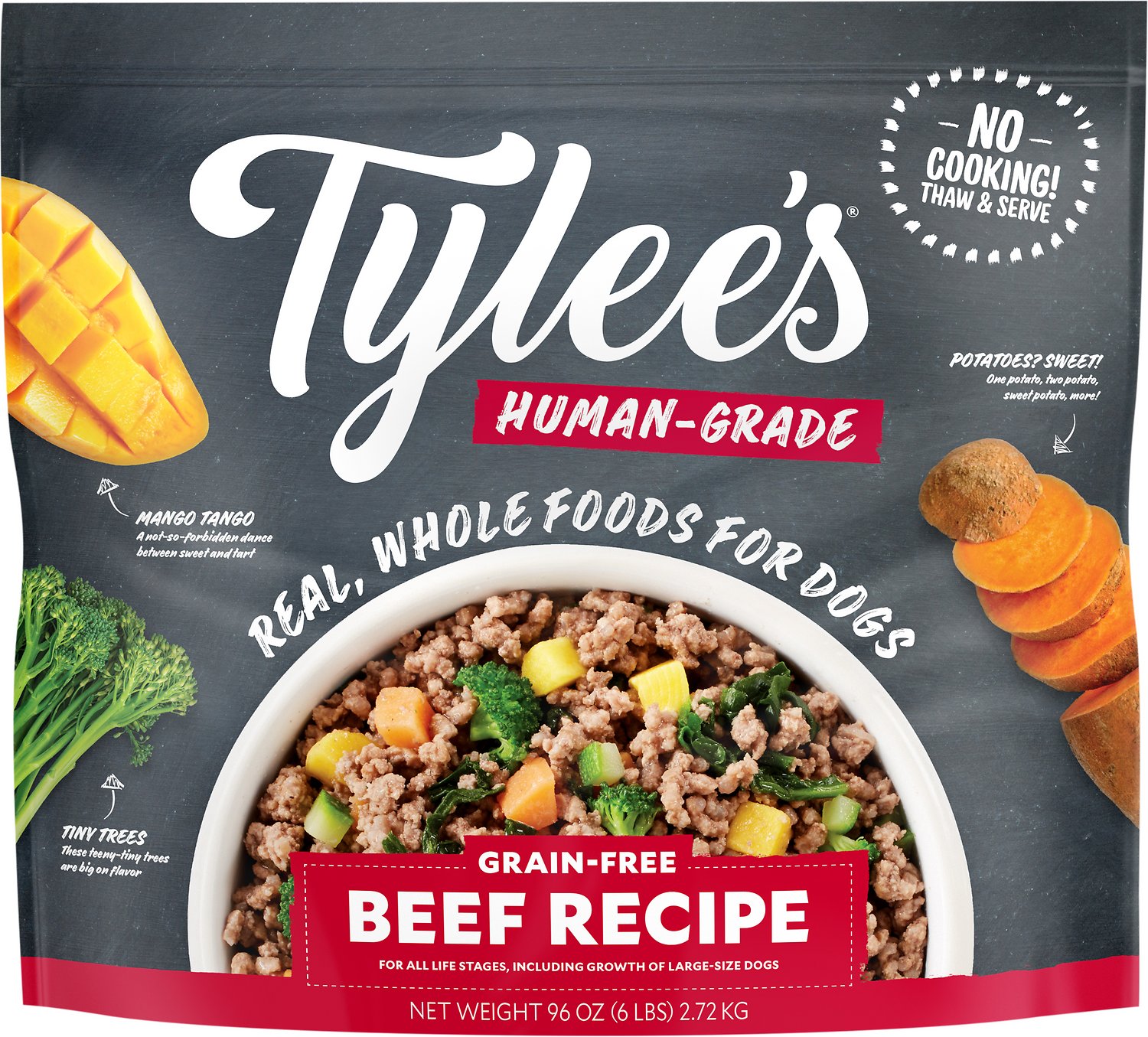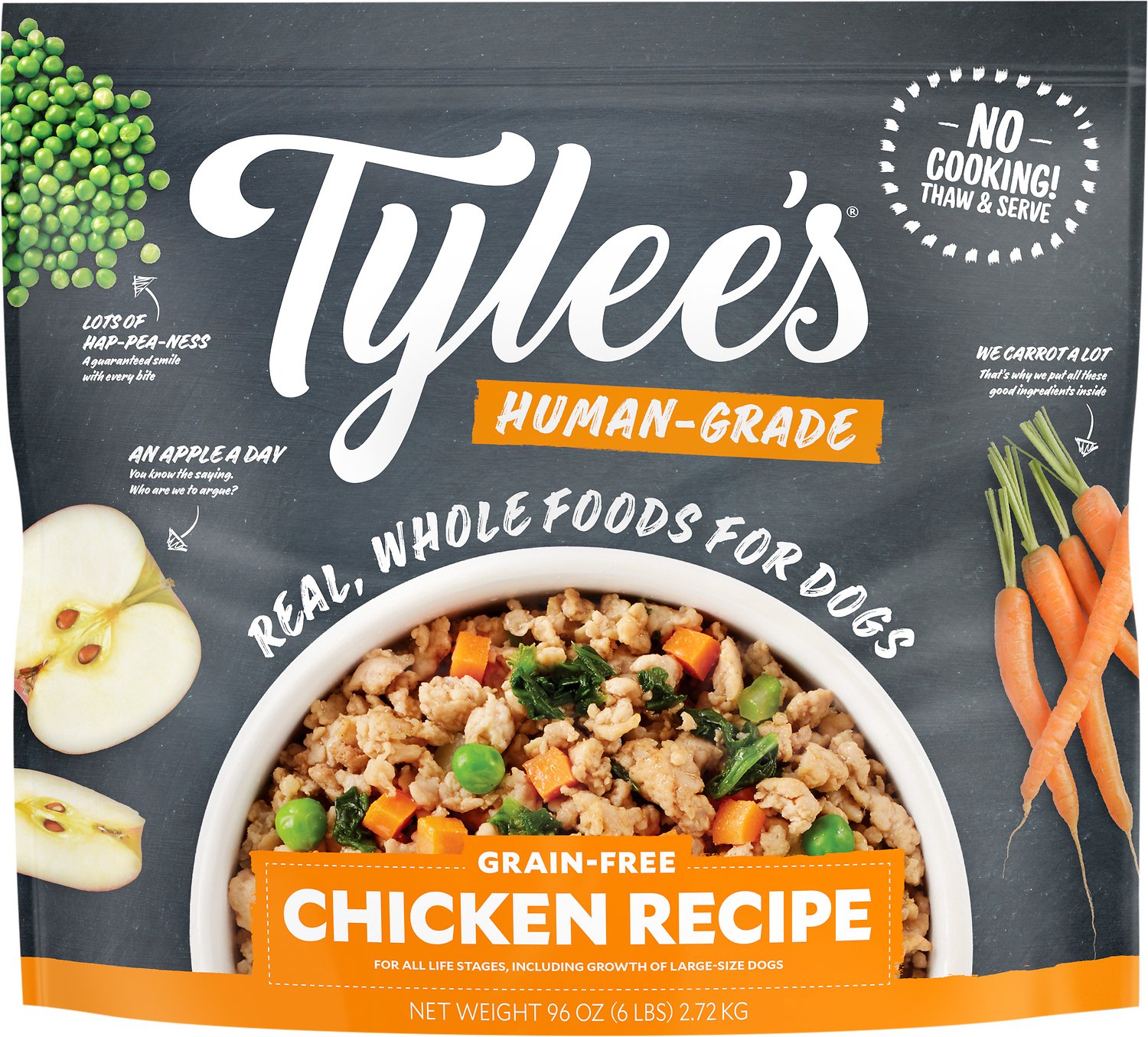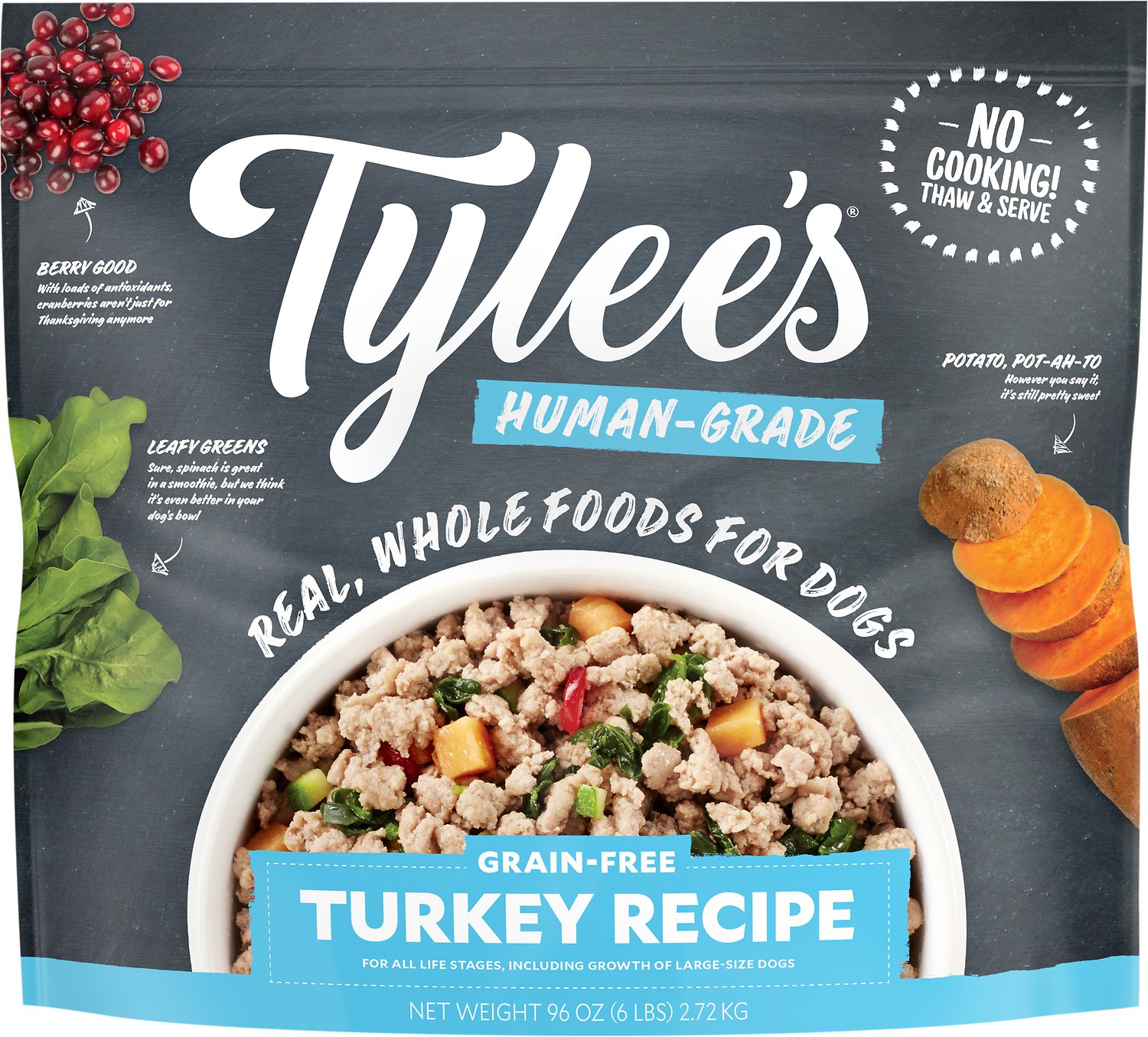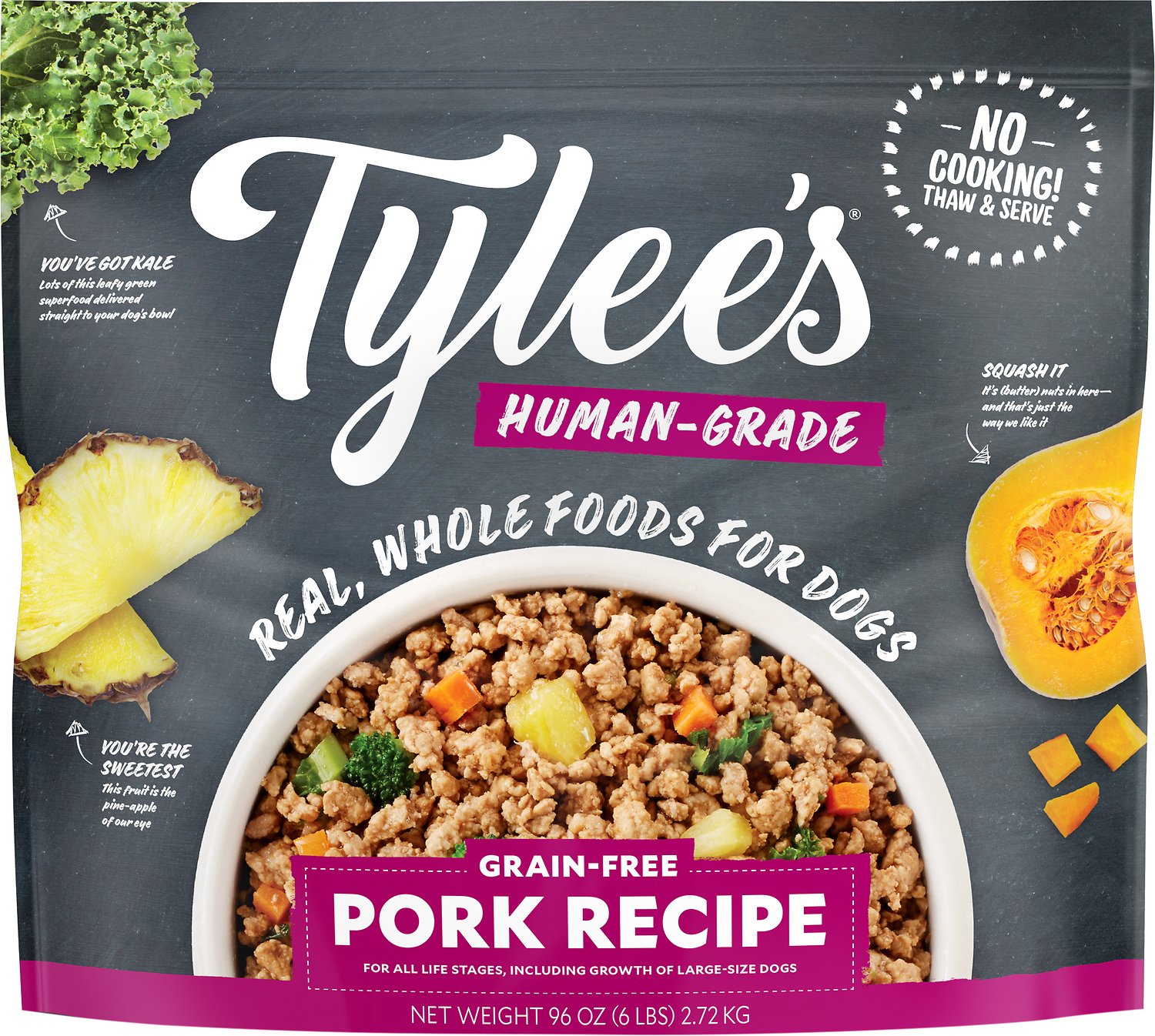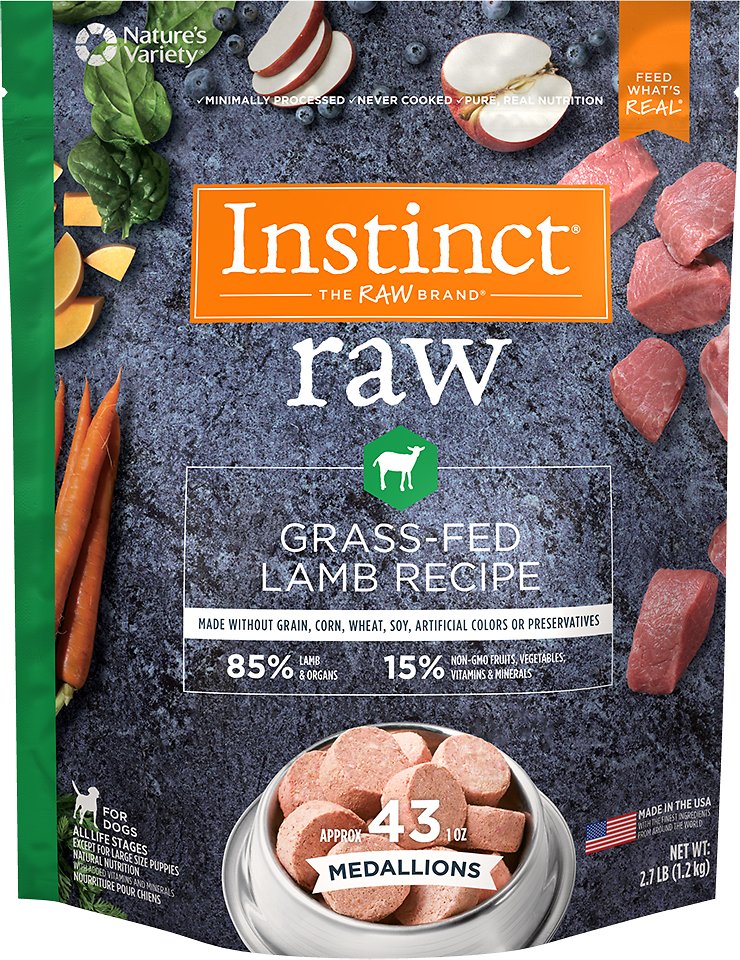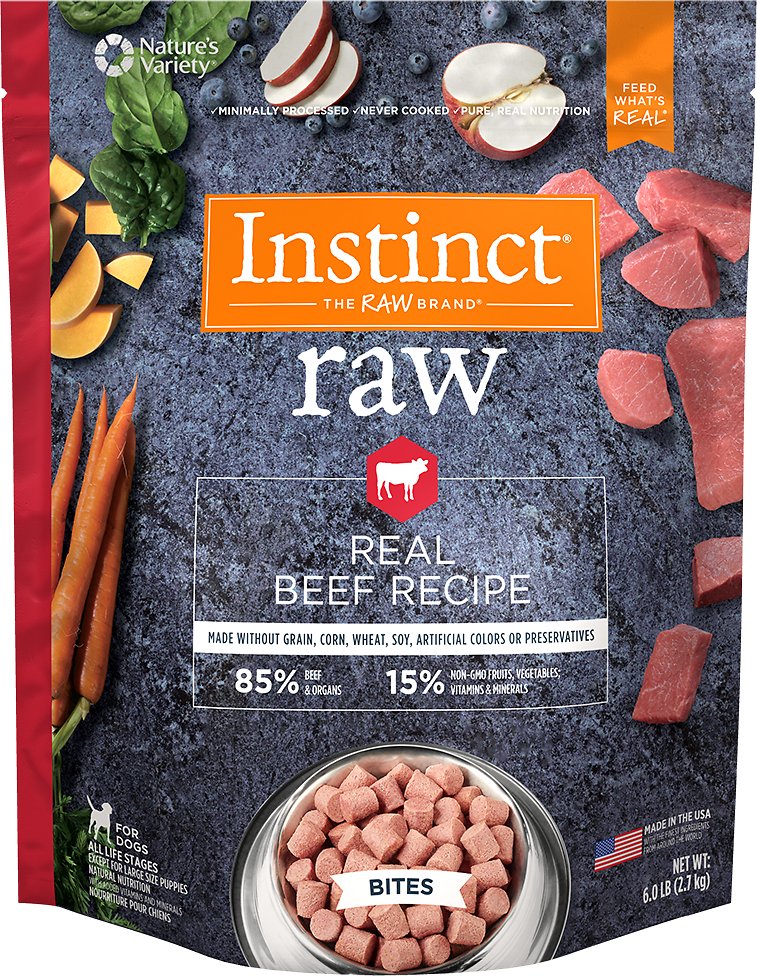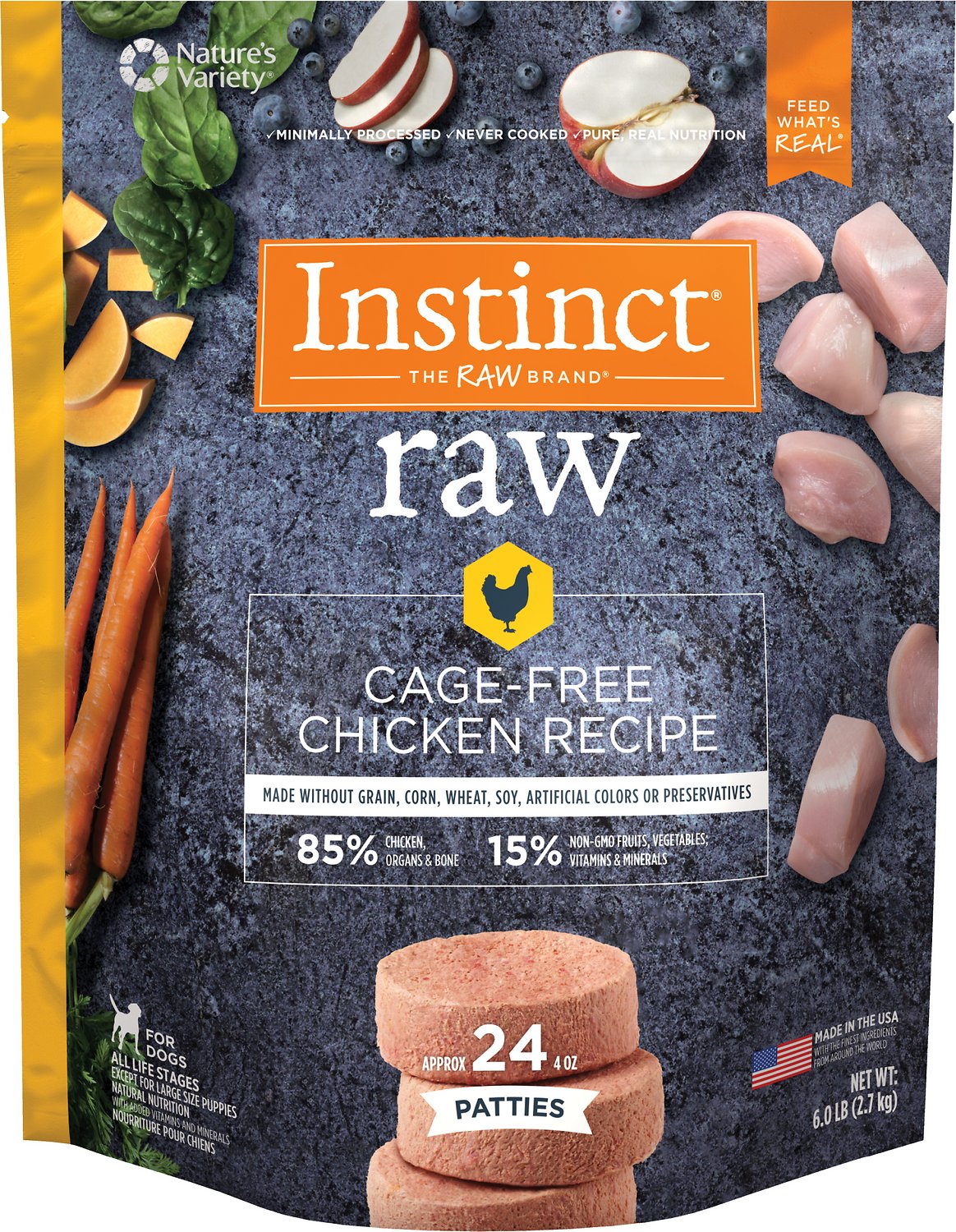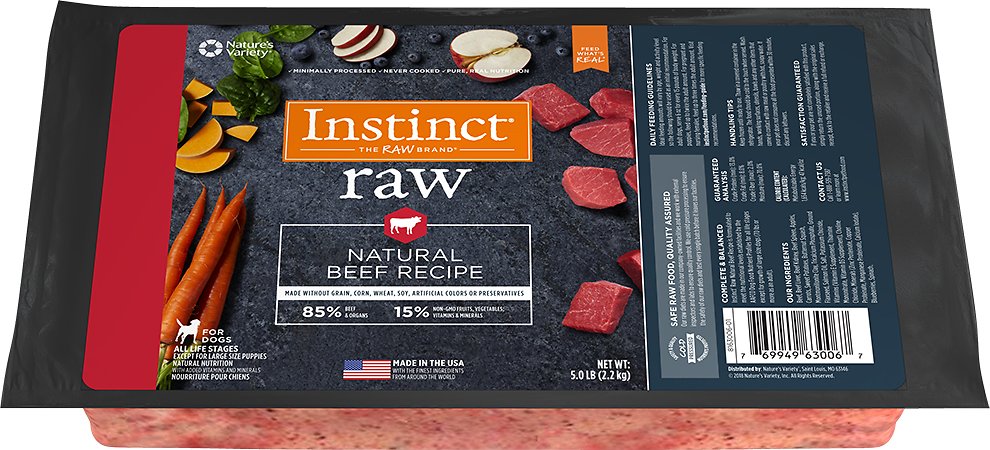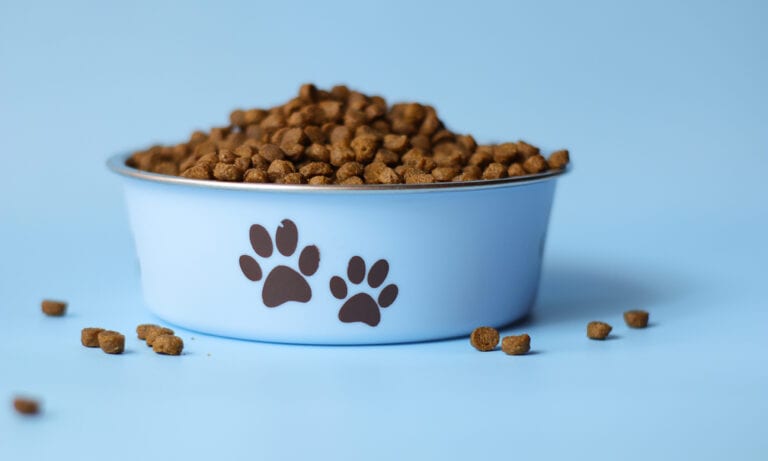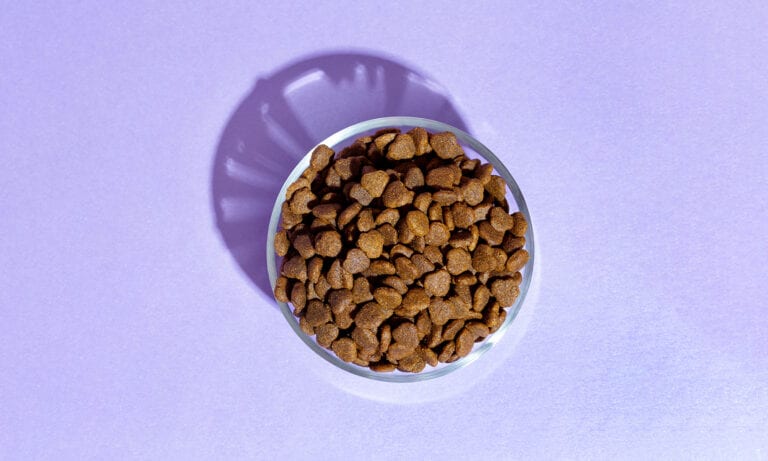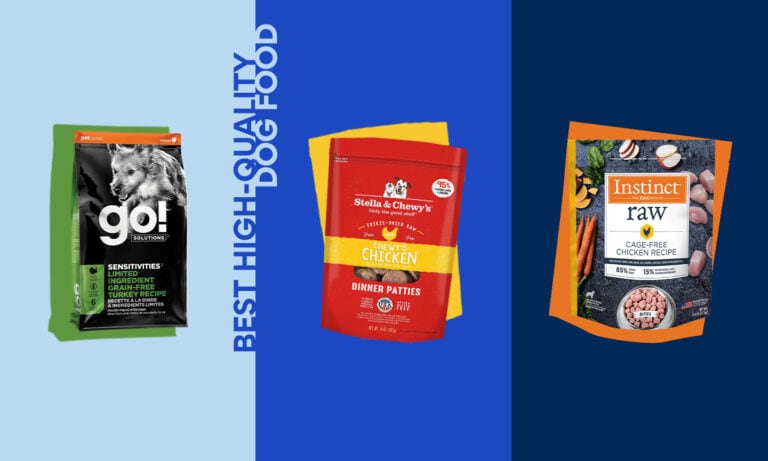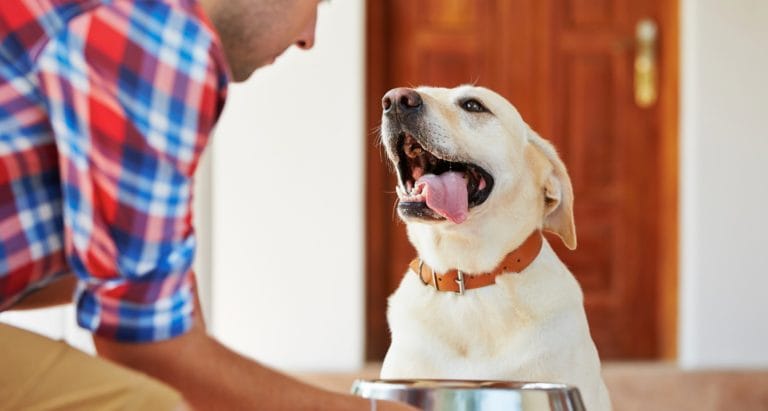With frozen dog food’s rise in popularity (especially frozen raw dog food), you probably have questions of your own, like—what is the difference between frozen raw dog food and cooked? Does frozen dog food provide the same nutritional quality as canned or dry food? Is it safe?
We interviewed veterinarians to help take the guesswork out of frozen dog food so you can make a more informed decision. As always, any discussion about your dog’s diet should begin with your veterinarian.
What Is Frozen Dog Food?
Freezing is essentially a food storage technique. It focuses on reduced processing with the intent of producing a product that’s higher in nutritional content. Frozen dog food is available as raw or cooked and comes in a variety of nutritional formulations and textures.
“Frozen cooked dog food is a medium option in between raw food and traditional kibbles or cans. It includes similar ingredients, such as meat, vegetables and fruits, but the meat is cooked,” says Dr. Zay Satchu, chief veterinary officer and co-founder of BondVet, based in New York City.
What Is Frozen Raw Dog Food?
Raw dog food is a type of diet consisting of raw ingredients like meat, vegetables, fruits and sometimes ingredients like bones, Dr. Satchu says.
“This type of diet can be stored frozen,” Dr. Satchu says, “which increases the shelf life and helps with food safety, just as you might store raw meat in the freezer for your own meals.”
Many companies offer packaged, frozen raw dog food diets that you can store in your freezer and thaw before serving. Raw dog food also comes in shelf-stable options, including freeze-dried and raw-boosted kibble.
Is Frozen Raw Dog Food Safe?
For a dog, frozen raw food may seem like a treat, but is it safe?
Some dogs can do well with raw food, Dr. Satchu says.
“Unfortunately, the diets can carry serious risks to your dog’s health, too,” she notes. “That includes food poisoning from salmonella or other pathogens carried in raw meat—a risk to humans who handle the food, too—and broken teeth or intestinal punctures due to the inclusion of bones.”
Freezing a food doesn’t guarantee its safety.
“It does not eliminate the bacteria responsible for most foodborne illnesses,” says Dr. Jennifer Coates, a veterinary writer, editor and consultant based in Fort Collins, Colorado. “If raw dog food is contaminated before it’s frozen, it will still be contaminated after it is frozen. Cooking is the best way to reduce the risk of foodborne illness.”
Raw foods especially can be harmful for animals (and people) who are very old, very young or immunocompromised, adds Dr. Coates.
Raw diets are not always suitable for puppies, Dr. Satchu says, because they can result in dangerous electrolyte abnormalities that lead to bone deformities.
“Therefore, pay attention to labels, and only commit to a raw diet for your puppy if it specifically mentions it’s tailored for growing puppies,” she says.
Benefits of Frozen Dog Food
“The principal here is that freezing the food helps to maintain the full nutritional value when compared to foods that are processed to have a longer shelf life out of the fridge,” says Dr. Satchu.
Some dogs can do well on frozen cooked foods without some of the risks linked to raw diets, Dr. Satchu says.
“So, if you like the idea of a raw food but want something with fewer health risks and less clean-up time, this might be a good option for you and your furry friend,” she says.
Proponents of raw diets believe they’re closer to what our dogs’ ancestors ate and, thus, more natural.
“It’s like Paleo for pups,” says Dr. Satchu, referring to the trendy Paleolithic diet, which includes foods early humans ate during the Paleolithic era. “It’s also thought that the lack of processing may help the food retain more nutrients for the dog.”
How to Feed Frozen Dog Food
Although serving instructions vary by brand and specific diet, preparation usually involves thawing the frozen food and possibly rehydrating it, says Dr. Satchu.
“Your best bet is to look for instructions on the package of the specific food you’re purchasing,” she says. “Follow instructions for proper storage, too.”
Raw diets require special care.
“Remember to treat it as you would raw meat,” Dr. Satchu says. “Wash your hands after handling it, and clean up your dog’s eating area and kitchen counters. Also, advise children not to handle the food.”
Frozen Dog Food Brands
While your veterinarian can help you choose the best frozen raw dog food or cooked food for your pup, the following are some premium brands to consider, including Tylee’s frozen cooked dog food and Instinct frozen raw dog food.
Tylee’s Frozen Cooked Dog Food
This food is offered in beef, chicken, turkey or pork recipes.
Tylee’s human-grade beef recipe frozen dog food is made with real beef that’s cooked then mixed with fruits and vegetables, such as sweet potatoes, mango and spinach, as well as ingredients packed with omega-3 and -6, like chia seeds and sunflower.
Instinct Frozen Raw Dog Food
This food comes in varieties including medallions, bites, patties and chub in beef, lamb or chicken.
Like Tylee’s frozen products, Instinct by Nature’s Variety frozen raw bites grain-free real beef recipe dog food contains ingredients like real meat and fruits and vegetables like apples, carrots and sweet potatoes. The difference is that these are not cooked and instead rely on High Pressure Processing (where high pressure is used to preserve foods instead of heat to contain nutrients) to preserve the ingredients.
Frozen dog food has its benefits, including ease of preparation and increased shelf life. There are cautions associated with raw foods of any type, however, so they may not be suitable for every animal. Start a conversation with your veterinarian about whether frozen foods—either raw or cooked—are right for your dog’s health needs.
Share:

